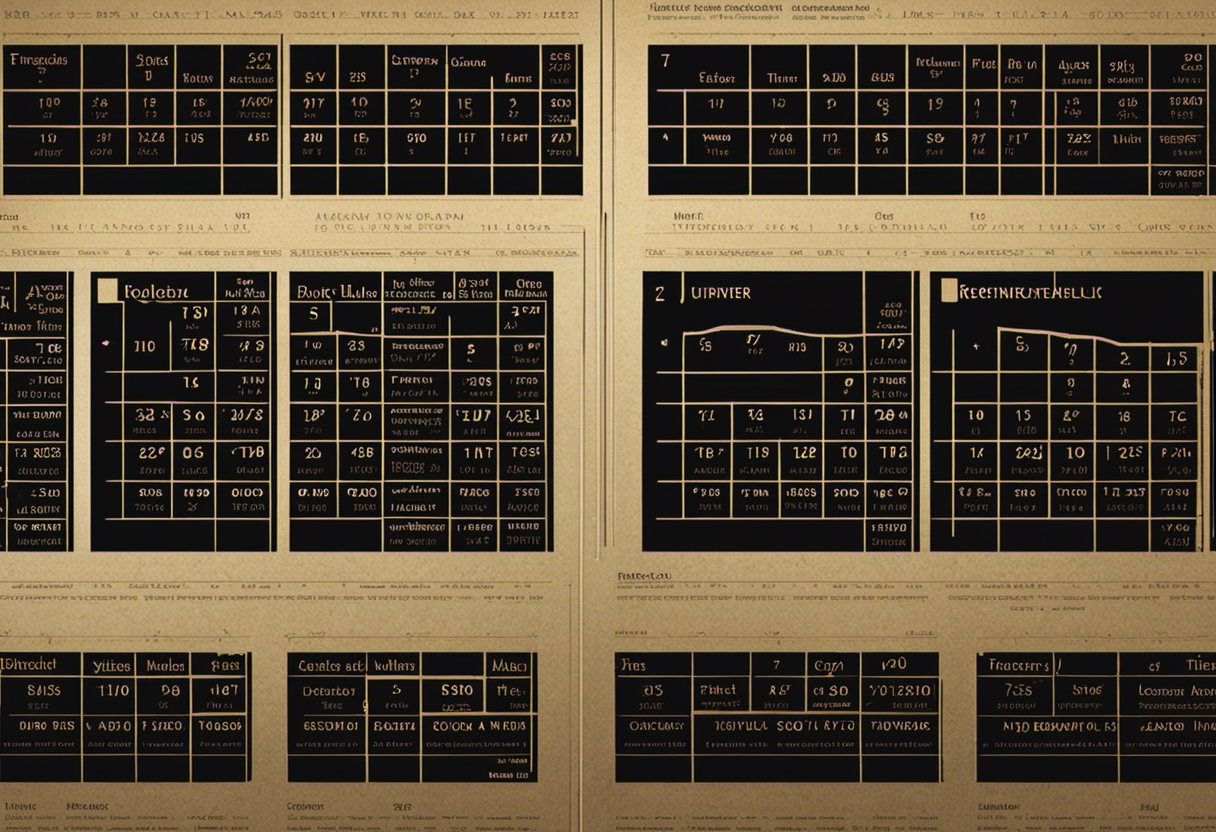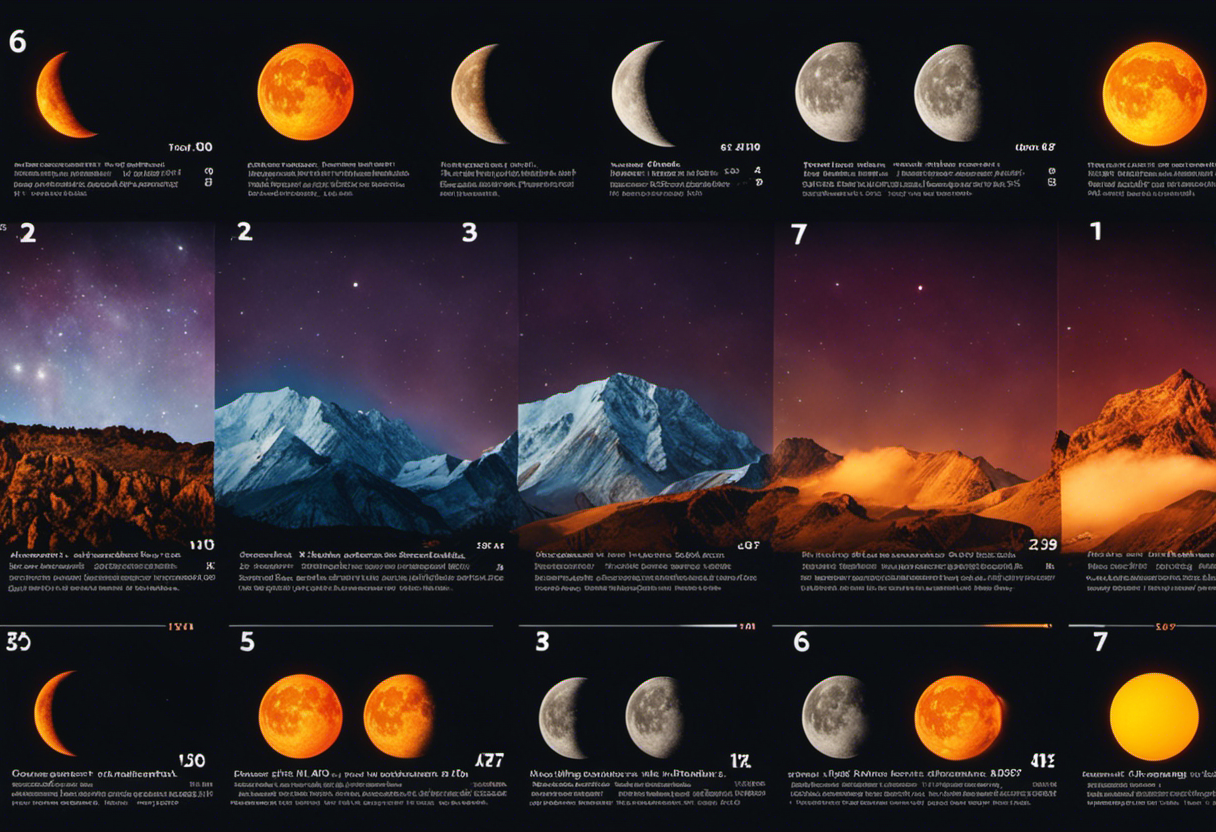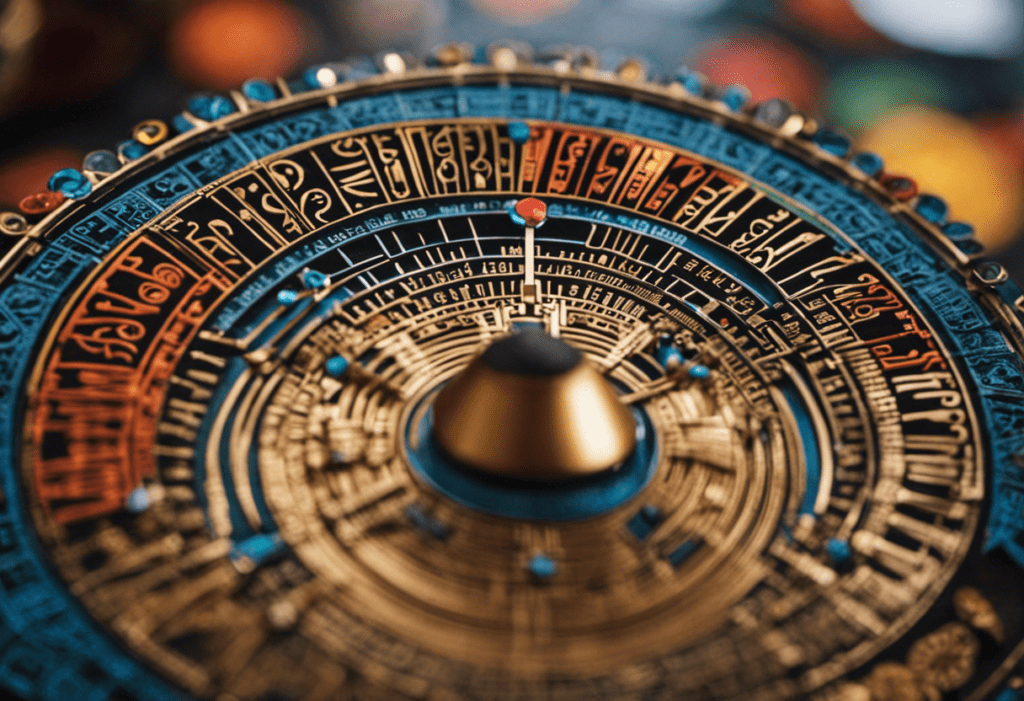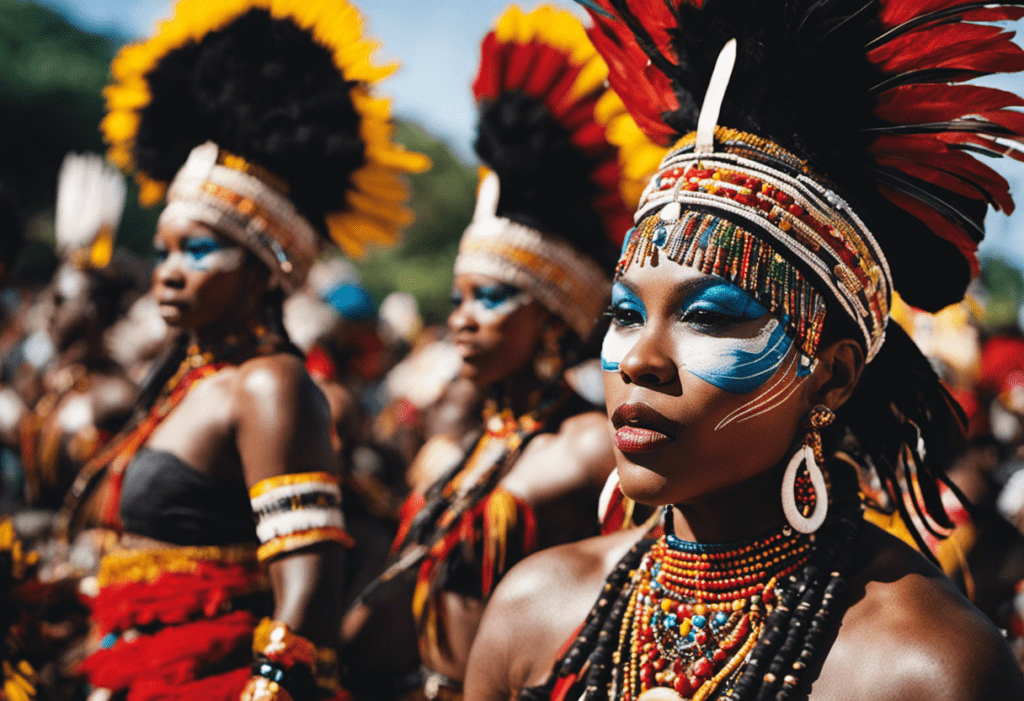Comparing calendars is a captivating exercise, shedding light on the diverse ways cultures measure time. In this comprehensive analysis, we examine the Zulu calendar and the Gregorian calendar, two systems with distinct origins and structures.
Through an objective lens, we delve into their lunar versus solar measurements, cultural significance, and global influence. By examining the calculation of months and years, as well as festivals and traditions, we uncover the fascinating similarities and differences that shape our perception of time.
Key Takeaways
- The Zulu Calendar follows a lunar-based system, while the Gregorian Calendar follows a solar-based system.
- The Zulu Calendar consists of 12 or 13 lunar months, whereas the Gregorian Calendar has 365 days in a common year and 366 days in a leap year.
- The Zulu Calendar tracks lunar phases, such as the waxing and waning of the moon, while the Gregorian Calendar divides the year into twelve fixed months.
- The Zulu Calendar holds cultural significance for the Zulu people and is used to determine auspicious timings for events, while the Gregorian Calendar provides a consistent framework for planning and scheduling.
Origins and History


In exploring the origins and history of the Zulu Calendar and the Gregorian Calendar, it becomes apparent that these calendars have distinct cultural and historical backgrounds.
The Zulu Calendar, also known as the Isizulu Calendar, originates from the Zulu people of South Africa. It is a lunar-based calendar that is deeply rooted in the cultural and spiritual practices of the Zulu community. The Zulu Calendar has a rich historical development and has been used for centuries to mark significant events, such as planting and harvesting seasons, religious festivals, and ancestral rituals.
On the other hand, the Gregorian Calendar, named after Pope Gregory XIII, was introduced in 1582 as a reform to the Julian Calendar. It is a solar-based calendar that is widely used around the world today. The Gregorian Calendar was developed to address inaccuracies in the Julian Calendar, which had slowly drifted out of sync with the solar year over time.
The historical development of the Gregorian Calendar involved a complex process of astronomical calculations and adjustments to ensure a more accurate measurement of time. It was implemented to align the calendar with the Earth’s revolution around the sun and to standardize the dating system across different countries.
Calendar Structure and Design


The calendar structure and design of both the Zulu Calendar and the Gregorian Calendar play a significant role in organizing and measuring time in their respective cultures.
The Gregorian Calendar, which is widely used in the Western world, follows a solar-based system and is designed to accurately measure the Earth’s orbit around the sun. It consists of 365 days in a common year and 366 days in a leap year. The Gregorian Calendar incorporates leap years to account for the fact that the Earth’s orbit is approximately 365.2425 days long. This design ensures a high level of calendar accuracy.
On the other hand, the Zulu Calendar, which is predominantly used by the Zulu people of South Africa, follows a lunar-based system. It is designed to align with the cycles of the moon and the agricultural practices of the Zulu culture. The Zulu Calendar consists of 12 or 13 lunar months, each beginning with the sighting of a new moon. This design allows the Zulu people to track the seasons and make cultural adaptations accordingly, such as determining the best time for planting and harvesting crops.
While the Zulu Calendar may not have the same level of accuracy as the Gregorian Calendar in measuring solar time, its design serves the cultural needs of the Zulu people.
Lunar Vs. Solar Measurement


While the Zulu Calendar follows a lunar-based system, the Gregorian Calendar is based on solar measurements.
The Zulu Calendar, also known as the IsiZulu Calendar, is primarily influenced by the cycles of the moon. It consists of twelve lunar months, each beginning with the appearance of the new moon. This lunar-based system allows for the tracking of lunar phases, such as the waxing and waning of the moon, which is significant in Zulu culture.
In contrast, the Gregorian Calendar is a solar calendar that is based on the Earth’s orbit around the sun. It divides the year into twelve months, with each month having a fixed number of days. This calendar was introduced by Pope Gregory XIII in 1582 and is widely used across the world today.
The difference in measurement between the two calendars has implications for various aspects of life, including agricultural events. The Zulu Calendar’s lunar-based system is closely tied to agricultural activities, as it helps determine the optimal timing for planting and harvesting crops. In contrast, the Gregorian Calendar’s solar-based system provides a consistent and predictable framework for planning and scheduling agricultural events.
Cultural Significance and Traditions


The Zulu calendar holds significant cultural value for the Zulu people, as it is deeply intertwined with their rituals and ceremonies.
These practices are often based on the lunar cycles, which play a crucial role in determining auspicious timings for events such as weddings, funerals, and initiation ceremonies.
Additionally, the Zulu calendar also encompasses seasonal celebrations that mark important agricultural milestones, reflecting the community’s close connection with the land and nature.
Rituals and Ceremonies
Within Zulu culture, rituals and ceremonies hold profound cultural significance and are deeply rooted in traditional customs and practices. These rituals and ceremonies play a crucial role in preserving the cultural identity of the Zulu people and are often passed down from generation to generation.
Here are four examples of Zulu rituals and ceremonies:
- Umemulo: This is a coming-of-age ceremony for young Zulu girls, marking their transition into womanhood. It involves traditional dances, the exchange of gifts, and the wearing of traditional attire.
- Umhlonyane: This is a harvest festival celebrated in December, during which the Zulu people give thanks for a successful harvest. It involves singing, dancing, and the preparation and sharing of traditional foods.
- Ukuthwala: This is a traditional Zulu marriage ceremony, where the groom’s family kidnaps the bride-to-be with her consent. It symbolizes the joining of two families and the bride’s acceptance of her new role.
- Isivivane: This is a ceremony performed to honor ancestors. It involves the creation of a stone cairn as a symbolic representation of the ancestors’ presence and the offering of prayers and gifts.
These rituals and ceremonies are deeply ingrained in Zulu culture and play a vital role in maintaining the cultural traditions and values of the Zulu people.
Seasonal Celebrations
Seasonal celebrations in Zulu culture are marked by vibrant festivities and rich traditions. These celebrations are deeply rooted in the cultural diversity of the Zulu people and hold great significance in their lives.
One of the most prominent seasonal celebrations is the harvest festival, which is celebrated with great zeal and enthusiasm. This festival is a time to give thanks for the bountiful harvest and to honor the ancestors who have provided for the community.
During the harvest festival, traditional dances and music are performed, and delicious traditional dishes are prepared and shared. It is a time for the community to come together, strengthen bonds, and celebrate the abundance of the land.
These seasonal celebrations showcase the Zulu culture’s deep connection to nature, community, and ancestral traditions.
Lunar-Based Festivities
Lunar-based festivities in Zulu culture revolve around the phases of the moon and are celebrated with various rituals and ceremonies. These festivities hold significant cultural value and are a way for the Zulu people to honor their ancestors and connect with the spiritual realm.
Here are some key aspects of lunar-based rituals and festivities in Zulu culture:
- Moon Phases: The Zulu calendar is closely tied to the lunar cycle, with specific rituals and ceremonies aligned with each phase of the moon. This includes the new moon, full moon, and the waxing and waning crescents.
- Cultural Significance: Lunar-based festivities play a crucial role in maintaining cultural traditions and passing them on to future generations. They provide an opportunity for the Zulu people to express their spirituality and reinforce their cultural identity.
- Rituals and Ceremonies: During these festivities, the Zulu people engage in various rituals and ceremonies, such as traditional dances, drumming, storytelling, and offerings to the ancestors. These practices are believed to bring blessings, protection, and harmony to the community.
- Community Engagement: Lunar-based festivities are a community affair, with people coming together to celebrate and participate in the rituals. These events foster a sense of unity, belonging, and shared cultural heritage among the Zulu people.
Calculation of Months and Years


The calculation of months and years in the Zulu and Gregorian calendars involves different methods and considerations. While the Gregorian calendar follows a solar year system with regular months, the Zulu calendar is based on lunar months, which can vary in length.
Additionally, the Zulu calendar has a different year length compared to the Gregorian calendar, resulting in a disparity between the two calendars’ dates and events.
Lunar or Solar Months
In the calculation of months and years in the Zulu calendar, the lunar or solar method is utilized. The Zulu calendar follows a lunar system, based on the cycles of the moon, but also incorporates solar adjustments to account for seasonal changes.
Here are four key aspects of the Zulu lunar or solar months:
- Lunar Phases: The Zulu calendar aligns its months with the phases of the moon, taking into account the waxing and waning of the lunar cycle.
- Seasonal Changes: To ensure that the calendar remains synchronized with the solar year and the changing seasons, the Zulu calendar incorporates adjustments based on the position of the sun.
- Lunar Month Length: The length of a lunar month in the Zulu calendar can vary, as it is based on the actual phases of the moon.
- Interpolation: To maintain consistency, the Zulu calendar uses interpolation techniques to reconcile the lunar and solar cycles, ensuring accurate tracking of time.
Different Year Lengths?
The Zulu calendar utilizes both lunar and solar calculations to determine the lengths of months and years, ensuring a comprehensive and accurate tracking of time.
Unlike the Gregorian calendar, which follows a fixed year length of 365 days, the Zulu calendar incorporates leap years to account for the slight discrepancy between the solar year and the lunar month.
A leap year in the Zulu calendar consists of 13 months instead of the usual 12, with the additional month known as ‘Undasa.’ This helps to synchronize the lunar and solar cycles, maintaining the alignment between the calendar and the natural rhythms of the earth and moon.
Additionally, the Zulu calendar does not incorporate leap seconds, as it primarily focuses on the synchronization of months and years rather than the precise measurement of time on a daily basis.
Festivals and Celebrations


During various festivals and celebrations, the Zulu calendar showcases the rich cultural heritage and traditions of the Zulu people. These events are an integral part of the Zulu calendar and play a significant role in preserving and passing down the customs and values of the community.
Here are four key aspects of festivals and celebrations in the Zulu calendar:
- Traditional Dances: Festivals provide a platform for showcasing a variety of traditional Zulu dances. These dances, such as the famous ‘Indlamu’ or Zulu war dance, are characterized by intricate footwork, rhythmic movements, and vibrant costumes. They not only entertain but also serve as a form of cultural expression and storytelling.
- Ceremonial Dress: Festivals offer an opportunity for Zulu people to display their traditional attire. Men wear animal skins, known as ‘izinene,’ and adorn themselves with traditional accessories like beadwork and headdresses. Women wear colorful cloth skirts called ‘isidwaba’ and accessorize with beaded necklaces, bracelets, and anklets. The ceremonial dress reflects the Zulu culture’s vibrancy, creativity, and pride.
- Rituals and Traditions: Festivals and celebrations in the Zulu calendar often involve various rituals and traditions. These rituals may include offerings to ancestors, prayers, and blessings. They are performed to seek blessings, protection, and to honor the ancestors who hold a significant place in Zulu culture and spirituality.
- Community Bonding: Festivals and celebrations bring the Zulu community together, fostering a sense of unity and togetherness. These events create an opportunity for people to connect, share stories, and strengthen their bond. They also serve as a platform for transmitting cultural knowledge and values to younger generations.
Adaptation and Global Influence


One notable aspect of the Zulu calendar is its adaptation and global influence, which has played a significant role in shaping cultural practices and traditions beyond the Zulu community. The Zulu calendar, with its unique lunar-based system, has gained recognition and appreciation worldwide for its accuracy and cultural richness. This global adaptation can be seen in various aspects of everyday life, including festivals, rituals, and even personal milestones.
The Zulu calendar’s cultural impact can be observed in the adoption of its festivals and celebrations by people from different backgrounds. The most well-known example is the annual Reed Dance, which has become a popular tourist attraction and has been embraced by people from all over the world. This celebration, which honors the Zulu king and promotes purity and virginity, has transcended cultural boundaries and has been recognized as a symbol of unity and pride.
Furthermore, the Zulu calendar has influenced global practices related to childbirth, marriage, and other significant life events. Many people, regardless of their cultural background, have incorporated Zulu traditions and customs into their own ceremonies, recognizing the cultural richness and significance of the Zulu calendar.
Conclusion
In conclusion, the Zulu calendar and the Gregorian calendar have distinct origins, structures, and cultural significance.
While the Gregorian calendar is widely used globally, the Zulu calendar holds importance within the Zulu community and is based on lunar measurements.
One particularly interesting statistic is that the Zulu calendar consists of 12 lunar months, resulting in a shorter year compared to the Gregorian calendar, which has 12 solar months.




